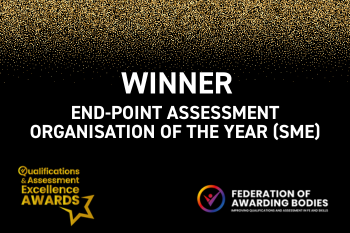Martyn’s Law, also known as Terrorism (Protection of Premises) Legislation , is proposed legislation in the UK aimed at enhancing public safety by requiring venues and organisations to implement counter-terrorism measures. Named in memory of Martyn Hett, a victim of the 2017 Manchester Arena attack, this law focuses on increasing preparedness for potential terrorist attacks.
Martyn’s Law has the potential to impact a large number of different types of venues. Find out which venues will be affected.
Read our Martyn’s Law explainers for more information:
- What is Martyn’s Law and how will it impact the security sector?
- Martyn’s Law explained: What is a responsible person?
- Martyn’s Law explained: Standard Duty
- Martyn’s Law explained: Enhanced Duty
Jump to:
- Who is in the scope for Martyn’s Law?
- The impact of Martyn’s Law on schools
- What does the bill mean for religious venues?
- Other excluded premises
Who is in scope for Martyn’s Law?
The tiered approach to Martyn’s Law is linked to the size of the venue, how many people will be there, and the activity taking place. The Standard Duty encompasses venues with capacity to host between 200 and 799 individuals at the same time. The Enhanced Duty is venues or events with the capacity of 800 or more individuals at the same time.
This means that the majority of music venues, theatres, music festivals, and public events will be in the scope.
Specifically, those who are in the scope are defined as follows:
Premises that satisfy the following three criteria fall within the scope of the bill:
- Premises as defined in the Terrorism (Protection of Premises) Bill
- Wholly or mainly used for one of more qualifying activity
- Meet the threshold for individuals present at a premises
Events that satisfy the following four criteria fall within scope of the bill:
- The event must take place in a premises as defined in clause 3 of the Terrorism (Protection of Premises) Bill
- Host at least 800 attendees at the same time
- Meet the ‘express permission’ criteria
- Be accessible to members of the public
The impact of Martyn’s Law on schools
Schools are public venues with significant foot traffic. The average primary school has 281 pupils and the average secondary school has 948 pupils, meaning that most schools would technically fall into the standard or enhanced duty premises category of Martyn’s Law. However, despite their high capacity, schools are being provided special consideration under the legislation, which will mean they face less strict rules and requirements when compared with other public venues.
Even if a school’s capacity is 800 or over, it is proposed that premises used for childcare, primary, secondary, or further education will fall within the Standard Duty. Venues in the standard duty will be required to put in place procedures to reduce harm to the public in the event of an attack. Find out more about what is required of Standard Duty premises.
See guidance on how educational venues should prepare for Martyn’s Law →
What does the bill mean for religious venues?
The bill provides a concession for ‘places of worship’. Similarly to educational venues, premises that satisfy the usage criteria of ‘communal worship’ or other communal religious practice in accordance with the tenets of a particular religion or religious denomination will be treated as Standard Duty premises, even when they would otherwise fit into the Enhanced Duty. This means that even when they have a capacity of 800 people or more, they will be required to meet the requirements of that of venues of 200-799 people.
The government has decided to make this exception due to the differing nature of places of worship from other venues in the scope, as they need to be readily accessible and welcoming to all, with no restriction on entry or staff being present.
Other excluded premises
While educational venues and places of worship are being provided special consideration when it comes to Martyn’s Law, ‘Schedule 2’ excludes some premises from the requirements of the bill. Those excluded are:
Parliaments and devolved governments
Premises occupied for the purposes of the government, such as the House of Parliament or the Scottish Parliament, are excluded from the requirements of the bill because these premises already have existing security procedures and measures in place, which are comparable to the bill’s requirements.
Parks, gardens, recreation grounds, sports grounds, and other open-air premises used for recreation, exercise or leisure
Stand-alone, parks, gardens, and other open-air spaces are excluded from the requirements of Martyn’s Law unless they have people employed to secure or check that members of the public who wish to access the premises, have paid to do so or have invitations or passes allowing them access. For example, Hyde Park won’t normally need to meet any Martyn’s Law requirements, but during their British Summer Time festival they will need to meet the requirements of the Enhanced Duty.
Transport premises
Transport premises, such as airports and train stations, are already required to meet existing legislation considering and mitigating threats. As a result, they are excepted from the requirements of Martyn’s Law.
The requirements of Martyn’s Law will be wide reaching, impacting the majority of venues and events, with a massive impact on the security sector. It is expected that all business will need to be compliant by late 2026, with enforcement and sanction powers coming in early 2027.
Stay up to date
SFJ Awards are the leading awarding organisation and End-Point Assessment organisation for the protective services sector, specialising in security, community safety, blue light services, and justice. Sign up to our mailing list to stay up to date with our developments for Martyn’s Law and receive insights into the law as the bill progresses.





